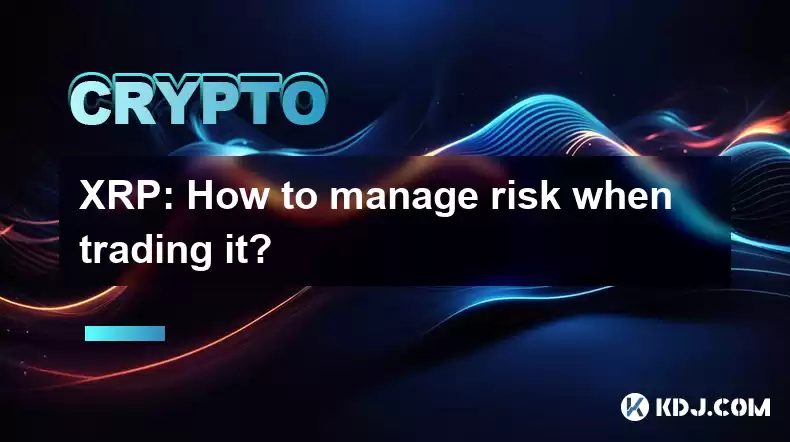-
 Bitcoin
Bitcoin $118300
1.01% -
 Ethereum
Ethereum $4215
0.69% -
 XRP
XRP $3.198
-3.83% -
 Tether USDt
Tether USDt $1.000
-0.01% -
 BNB
BNB $803.4
-0.53% -
 Solana
Solana $180.3
-0.67% -
 USDC
USDC $0.9998
-0.01% -
 Dogecoin
Dogecoin $0.2334
-1.49% -
 TRON
TRON $0.3394
0.86% -
 Cardano
Cardano $0.7980
-1.45% -
 Chainlink
Chainlink $22.19
6.65% -
 Hyperliquid
Hyperliquid $43.41
0.13% -
 Stellar
Stellar $0.4407
-3.13% -
 Sui
Sui $3.843
-2.24% -
 Bitcoin Cash
Bitcoin Cash $564.7
-3.74% -
 Hedera
Hedera $0.2588
-3.41% -
 Ethena USDe
Ethena USDe $1.001
0.00% -
 Avalanche
Avalanche $23.64
-3.37% -
 Litecoin
Litecoin $120.0
-4.01% -
 Toncoin
Toncoin $3.342
-1.11% -
 UNUS SED LEO
UNUS SED LEO $9.038
0.60% -
 Shiba Inu
Shiba Inu $0.00001347
-0.81% -
 Uniswap
Uniswap $10.69
-4.58% -
 Polkadot
Polkadot $4.034
-1.30% -
 Dai
Dai $1.000
0.01% -
 Bitget Token
Bitget Token $4.472
-1.52% -
 Cronos
Cronos $0.1571
-3.04% -
 Pepe
Pepe $0.00001207
-2.21% -
 Monero
Monero $273.8
-3.19% -
 Ethena
Ethena $0.7520
2.75%
XRP: How to manage risk when trading it?
Effective risk management is crucial for XRP traders, encompassing stop-loss orders, position sizing, technical analysis, and careful evaluation of market conditions and sentiment.
Feb 06, 2025 at 09:06 am

Key Points:
- Understanding the volatility of XRP and its potential impact on trading decisions.
- Developing effective risk management strategies to mitigate losses and maximize profit potential.
- Utilizing technical analysis tools and indicators to identify potential trading opportunities and minimize risk.
- Evaluating market conditions and sentiment to make informed trading decisions.
- Implementing stop-loss orders and position sizing techniques to manage risk and protect capital.
How to Manage Risk When Trading XRP
1. Understand XRP's Volatility
XRP is known for its volatility, which can result in significant price fluctuations over short periods. This volatility presents both opportunities and risks for traders. It is crucial to research historical price data and understand the factors influencing XRP's price movements. These factors include news events, market sentiment, and changes in industry regulations.
2. Develop Effective Risk Management Strategies
Risk management is essential for protecting capital and maximizing profit potential in XRP trading. Traders should develop a comprehensive risk management plan that includes:
- Setting Realistic Profit Targets: Determine realistic profit targets based on market conditions and personal risk tolerance. Avoid setting unrealistic profit goals that increase exposure to unnecessary risk.
- Placing Stop-Loss Orders: A stop-loss order is an instruction to sell XRP at a predetermined price if the price falls below a certain level. This order helps limit potential losses in the event of an adverse market movement.
- Position Sizing: Position sizing refers to the amount of capital allocated to each trade. Traders should calculate an appropriate position size based on their risk tolerance, available capital, and market volatility.
3. Utilize Technical Analysis
Technical analysis involves studying historical price data and market patterns to identify potential trading opportunities and minimize risk. XRP traders can use various technical indicators and tools, such as:
- Moving Averages: Moving averages smooth out price fluctuations, providing insights into the current trend and potential support and resistance levels.
- Indicators: Indicators such as Bollinger Bands and Relative Strength Index (RSI) help identify potential overbought or oversold conditions. They can provide signals for entry and exit points in trades.
- Candlestick Patterns: Candlestick patterns represent price action over a specific period. Traders can study these patterns to identify potential reversals or continuation patterns.
4. Evaluate Market Conditions and Sentiment
Understanding market conditions and sentiment is vital for making informed trading decisions. Traders should monitor the following:
- News and Events: News related to XRP, the cryptocurrency industry, or global economic events can significantly impact price movements. Stay updated with relevant news and announcements.
- Market Sentiment: Sentiment indicators such as volume, social media sentiment, and market commentary provide insights into market sentiment. Positive sentiment may indicate bullish trends, while negative sentiment may suggest bearish trends.
- Technical Indicators: Technical indicators can help identify overbought or oversold conditions, which can signal potential trend reversals.
5. Implement Stop-Loss Orders and Position Sizing
Implementing Stop-Loss Orders: Stop-loss orders are essential risk management tools. They limit losses by automatically selling XRP when a predefined price level is reached. Traders should set stop-loss orders at a level that protects their capital without hindering potential profits.
Position Sizing: Position sizing involves allocating capital to trades based on risk tolerance and market conditions. Traders should start with a small position size when entering a new trade. If the trade moves favorably, they can increase their position size while managing the overall risk exposure.
FAQs
Q: What are some common risks associated with XRP trading?
A: Some risks include volatility, regulatory changes, and market manipulation.
Q: Is it possible to profit from XRP trading with high volatility?
A: Yes, but it requires a deep understanding of risk management and technical analysis.
Q: How can I reduce the risks associated with XRP trading?
A: Using stop-loss orders, position sizing techniques, and proper technical analysis can help mitigate risks.
Q: What is the best strategy for trading XRP in a volatile market?
A: Employing a combination of risk management strategies, technical analysis, and fundamental analysis is essential for success.
Q: How do I stay updated with the latest news and events affecting XRP?
A: Follow reputable news sources, analyze market sentiment, and subscribe to industry newsletters.
Disclaimer:info@kdj.com
The information provided is not trading advice. kdj.com does not assume any responsibility for any investments made based on the information provided in this article. Cryptocurrencies are highly volatile and it is highly recommended that you invest with caution after thorough research!
If you believe that the content used on this website infringes your copyright, please contact us immediately (info@kdj.com) and we will delete it promptly.
- Cold Wallet's Hot Streak: Acquisition, User Growth, and How it Stacks Up Against Ethereum & XRP
- 2025-08-10 20:30:16
- Bitcoin, Cloud Mining, and Crypto Earnings: What's Hot in 2025?
- 2025-08-10 20:50:12
- Presale Cryptos Face-Off: BlockDAG, TOKEN6900, and the Hunt for the Next Big Thing
- 2025-08-10 20:55:12
- DeFi, Meme Coins, and 2025: Navigating the Crypto Landscape
- 2025-08-10 20:30:16
- Cardano, Returns, and Trade Deals: A New Yorker's Take
- 2025-08-10 18:50:16
- Dogwifhat's Comeback: Solana Meme Coin Mania and Beyond!
- 2025-08-10 18:30:15
Related knowledge

What is Ethereum’s Slashing mechanism and how to punish malicious behavior?
Feb 20,2025 at 03:08am
Key PointsOverview of slashingDifferent types of slashing in EthereumIncentives and consequences of slashingIdentifying and reporting slashed validato...

What is the verifier node of Ethereum and how to become a verifier?
Feb 19,2025 at 06:00pm
The Verifier Node of Ethereum: A Comprehensive GuideKey Points:What is a Verifier Node?How to Become a Verifier NodeResponsibilities and Rewards of a ...

What is Ethereum’s staking, and how to participate and earn money?
Feb 19,2025 at 04:37pm
Key Points:Understanding Ethereum's Staking MechanismSteps to Participate in StakingBenefits and Rewards of StakingSecurity and Risk ConsiderationsTec...

What is Ethereum’s DAO (Decentralized Autonomous Organization) and how does it work?
Feb 20,2025 at 03:12am
Key PointsDefinition and Structure of a DAOGovernance and Decision-Making in DAOsBenefits and Use Cases of DAOsChallenges and Limitations of DAOsWhat ...

What is Ethereum's multi-signature wallet and how to improve security?
Feb 20,2025 at 02:18pm
Key Points:Understanding the Concept of a Multi-Signature WalletBenefits and Drawbacks of Multisig WalletsRequirements for Setting Up a Multisig Walle...

What is Ethereum's oracle and how to provide data for smart contracts?
Feb 21,2025 at 01:30am
Key Points:Understanding the concept of oracles in EthereumExploring different types of oraclesDetailed guide on how to provide data for smart contrac...

What is Ethereum’s Slashing mechanism and how to punish malicious behavior?
Feb 20,2025 at 03:08am
Key PointsOverview of slashingDifferent types of slashing in EthereumIncentives and consequences of slashingIdentifying and reporting slashed validato...

What is the verifier node of Ethereum and how to become a verifier?
Feb 19,2025 at 06:00pm
The Verifier Node of Ethereum: A Comprehensive GuideKey Points:What is a Verifier Node?How to Become a Verifier NodeResponsibilities and Rewards of a ...

What is Ethereum’s staking, and how to participate and earn money?
Feb 19,2025 at 04:37pm
Key Points:Understanding Ethereum's Staking MechanismSteps to Participate in StakingBenefits and Rewards of StakingSecurity and Risk ConsiderationsTec...

What is Ethereum’s DAO (Decentralized Autonomous Organization) and how does it work?
Feb 20,2025 at 03:12am
Key PointsDefinition and Structure of a DAOGovernance and Decision-Making in DAOsBenefits and Use Cases of DAOsChallenges and Limitations of DAOsWhat ...

What is Ethereum's multi-signature wallet and how to improve security?
Feb 20,2025 at 02:18pm
Key Points:Understanding the Concept of a Multi-Signature WalletBenefits and Drawbacks of Multisig WalletsRequirements for Setting Up a Multisig Walle...

What is Ethereum's oracle and how to provide data for smart contracts?
Feb 21,2025 at 01:30am
Key Points:Understanding the concept of oracles in EthereumExploring different types of oraclesDetailed guide on how to provide data for smart contrac...
See all articles

























































































